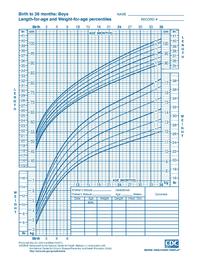
Photo from wikipedia
Gausman et al1 argue that multiple measures of anthropometric failure (AF) are needed to assess undernutrition in the country context and design public health and nutrition programs to reach the… Click to show full abstract
Gausman et al1 argue that multiple measures of anthropometric failure (AF) are needed to assess undernutrition in the country context and design public health and nutrition programs to reach the most economically disadvantaged children younger than 5 years. But in practice, how can programs use information on AF to improve delivery of crucial interventions? Anthropometric failure is a collective label for stunting (height-for-age), wasting (weight-for-height), and underweight (weight-for-age) outcomes, which serve as proxies for undernutrition in the absence of nutritional intake data. Although wasting and underweight are caused by both short-term and long-term nutritional insufficiency as well as disease, usually stunting does not result from short-term insufficiency. Gausman et al1 used Demographic and Health Survey (DHS) data from 56 lowand middleincome countries to compare different measures of AF. Their analysis looks at the 3 conventional measures of AF (stunting, underweight, and wasting rates); an alternative classification system called the Composite Index of Anthropometric Failure (CIAF), which aggregates the 3 conventional measures into a single indicator; and a disaggregated measure entitled Categories of Anthropometric Failure (CAF) that quantifies the proportion of children who have combinations of the 3 conventional measures. The CAF looks at the disease burden from 3 combinations of AFs: stunting, wasting, and underweight, stunting and underweight, and wasting and underweight. A fourth combination, stunting and wasting without underweight, is not possible. Stunting only, wasting only, and underweight only are also theoretical options. Because the mortality impact is clearest in the stunting, wasting, and underweight group, this indicator could be a primary focus for nutrition and health programs. The analysis found significant differences in estimates of children with undernutrition depending on the choice of measure. Substantial overlap between the 3 conventional measures suggests that children may experience 1 or multiple failures at different times in their lives. Focusing on overall prevalence of stunting, underweight, and wasting only, without disaggregation, risks neglecting children with coinciding AFs. The children with simultaneous AFs are obviously more disadvantaged and have increased risk of poor health outcomes (evidence suggests that at least coinciding stunting, wasting, and underweight increases mortality).2 These children are also likely to be the hardest for programs to reach. The analysis did not stratify by age or sex, and it would be interesting to explore whether younger children (eg, 6-11 or 6-23 months) have a different profile than older children and whether there are differences between girls and boys. Nevertheless, more information on the association between multiple, concurrent failures (as defined by the CAF and other measures) will help public health and nutrition program managers address inequities in delivery and contribute toward global goals, such as the United Nations’ Sustainable Development Goal (SDG) Target 2.2, which seeks to end all forms of malnutrition by 2030. How can information on CAF combinations inform the way health and nutrition programs are delivered? The study findings suggest Niger as an example of a country with a large proportion of the overall burden of AFs (7.5%) is owing to coinciding stunting, wasting, and underweight. This contrasts with bordering Benin, which has a similar overall CIAF burden (57.1% in Benin and 56.0% in Niger) but only half the rate of stunting, wasting, and underweight (around 3.6%). Benin instead has a larger burden of stunting only, about 29% compared with Niger’s 15.7%. Sex differences might explain some of this variation. Similarly, Burkina Faso and Guatemala both have a CIAF of 47.3%, but + Related article
Journal Title: JAMA network open
Year Published: 2022
Link to full text (if available)
Share on Social Media: Sign Up to like & get
recommendations!